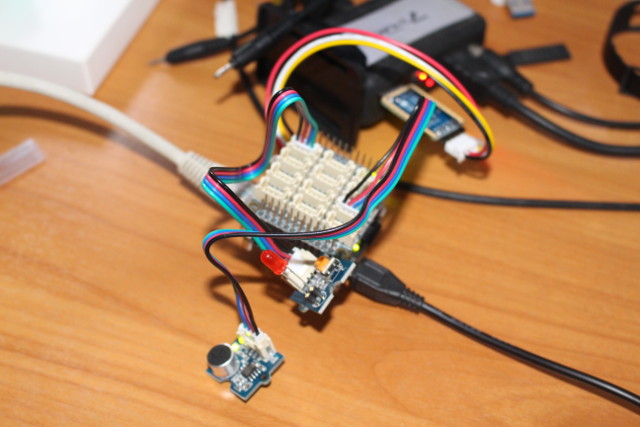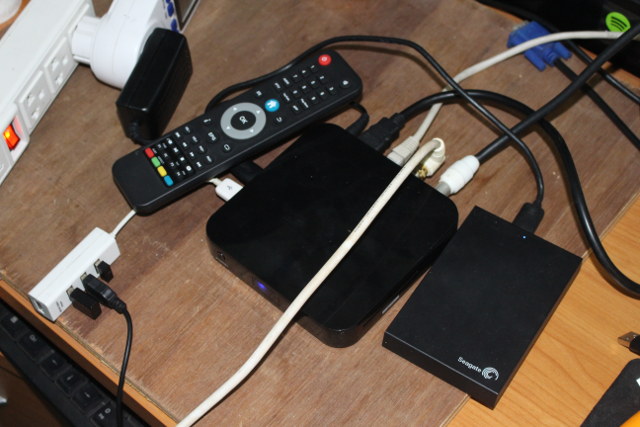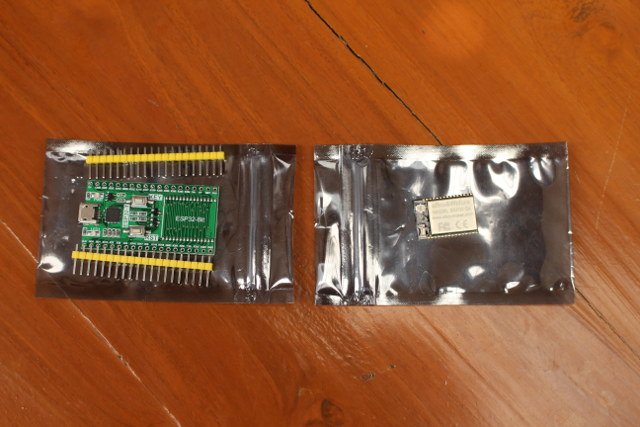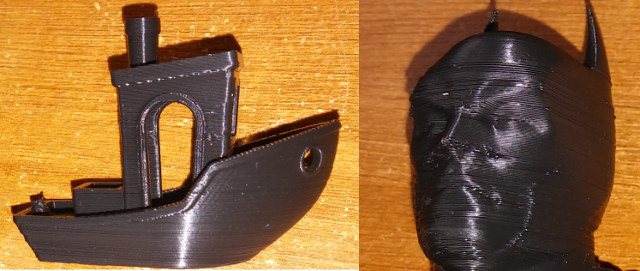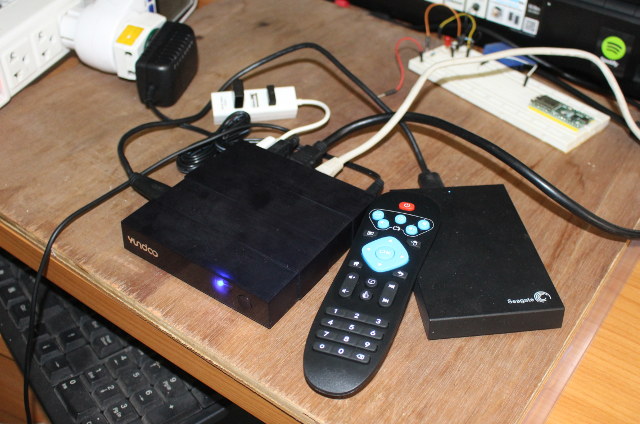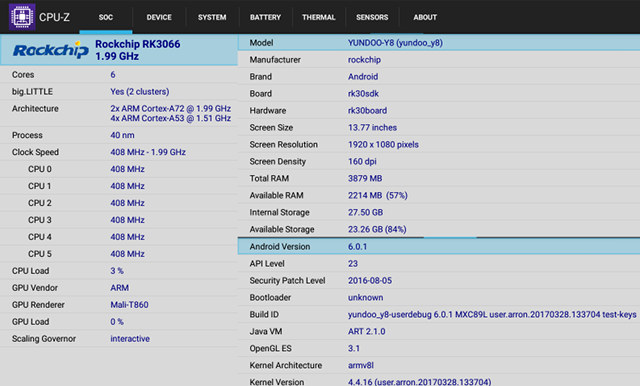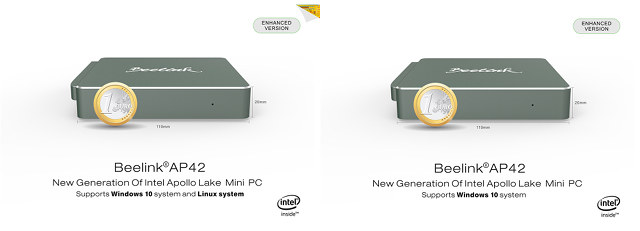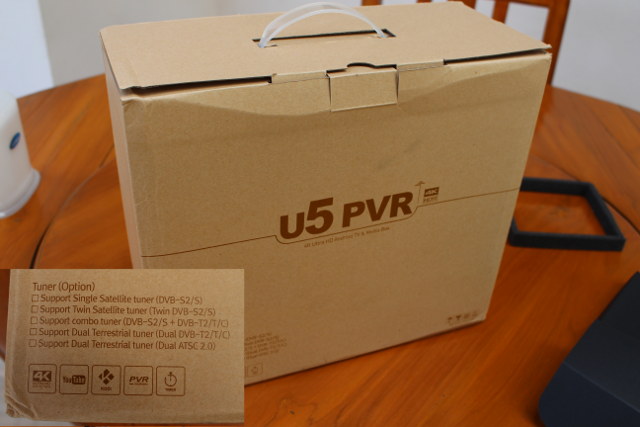NanoPi NEO 2 is a tiny 64-bit ARM development board powered by Allwinner H5 processor. FriendlyELEC sent me a couple of NEO 2 samples together with their BakeBit Start Kit with a NanoHat and various modules via GPIOs, analog input or I2C. I’ve already tested both Armbian with Linux 4.11 and Ubuntu Core Qt with Linux 3.10, and ran a few benchmarks on NanoPi NEO 2. You would normally prefer to use the Armbian image with Linux mainline since it provided better performance, but at the time I was told GPIO support was not there. Configuring NanoPi NEO 2 board with BakeBit library So this week-end, when I decided to test GPIO support and BakeBit Starter Kit, I decided to follow this advice, especially nanopi-neo2-ubuntu-core-qte-sd4g-20170329.img.zip image is still the recommended one in the Wiki. So I went with that image. I’ll use Python examples from Bakebit library, but if you […]
Sen5 Amlogic S905D TV Box Review – Part 2: Android Firmware, Kodi 17, and DVB-T2 & S2 App
Sen5 is one of the first Android TV boxes powered by Amlogic S905D processor, and comes with two tuners (DVB-C/T/T2 and DVB-T/T2) with two demodulators that should allow for recording on one tuner, while watching the other, or recording two channels at the same time. We’ve already check out the hardware in the first part of the review, and seen a glimpse of the neat user interface, so today I’ll report about my experience with the device. Sen5 Android Set-Top Box First Boot, Setup Wizard, & First Impressions The STB comes with two USB ports so I used one for the hard drive, a necessity if you plan to use the PVR function, and connected a USB hub to the other with RF dongles for an air mouse and a gamepad, as well as a USB keyboard to take screenshots. I also connected Ethernet and HDMI cables, as well as […]
Getting Started with ESP32-Bit Module and ESP32-T Development Board using Arduino core for ESP32
Espressif ESP32 may have launched last year, but prices have only dropped to attractive levels very recently, and Espressif has recently released released ESP-IDF 2.0 SDK with various improvements, so the platform has become much more interesting than just a few weeks ago. ICStation also sent me ESP32-T development board with ESP32-bit module, so I’ll first see what I got, before trying out Arduino for ESP32 on the board. ESP32-T development board with ESP-bit Module – Unboxing & Soldering One thing I missed when I asked for the board is that it was not soldered, and it comes in kit with ESP32-bit module in one package, and ESP32-T breakout board with headers in another package. The 21.5x15mm module is based on ESP32-DOWNQ6 processor with 32 Mbit (4MB) of flash, a chip antenna, and a u.FL connector. The module is apparently made by eBox, and also used in Widora board with […]
Creality CR-10 3D Printer Review – Part 2: Tips & Tricks, Octoprint, and Craftware
Hey Karl again with part 2 of my 3D printing experience with the CR-10, after the first part describing CR-10 3D printer setup and first prints. The intent is to share my experiences with the CR-10 with the perspective from a noob. I have to say if you are hard heading like I am, and do a lot of research but don’t fully listen to what you are reading, you are going to waste a lot of filament and time. I spent a couple hours a day for weeks with trial and error and watching the printer and how it works adjusting about a billion settings and testing. I am hoping this will help any current or future CR-10 owner speed up the learning curve. Measuring Filament Diameter The single biggest thing to improve my print quality I found was measuring the filament. I read about this several times but […]
Yundoo Y8 Rockchip RK3399 mini PC Review – Part 2: Android Firmware, Audio & Video Playback in Kodi
Yundoo Y8 is one of the first Android TV boxes / mini PCs powered by Rockchip RK3399 hexa-core processor to be launched. GearBest sent me a review sample, and since I’ve already taken it apart in the first part of the review, I’ll report my experience with the firmware in terms of stability and performance, as well as audio & video capabilities with TVMC (Kodi fork), and more. First Boot, Setup, and First Impressions I’ve first connected a few peripherals Seagate USB 3.0 drive to the USB port, a USB keyboard to one of the USB 2.0 port, and a USB hub to the other one with two USB RF dongles for MINIX NEO A2 Lite air mouse, and Tronsmart Mars G01 gamepad. After adding Ethernet and HDMI cable, I pressed the power button on the unit to start it up. Please note that the remote control cannot turn on […]
Yundoo Y8 Rockchip RK3399 TV Box System Info and Benchmarks
Most 64-bit ARM processors found in TV boxes and mini PC features ARM Cortex A53 cores which are good enough to watch most videos, since video decoding is usually handled by the video processing unit. But if you want some more performance for games and web browsing, SoCs based on Cortex A72 or similar high performance ARMv8 cores would deliver much a much better experience in Android. The problem is that there aren’t many options with products such as NVIDIA Shield Android TV, and Xiaomi Mi Box 3 Enhanced. The former is potentially expensive depending where you live, and the later is targeted at the Chinese market and lacks an Ethernet port. Rockchip RK3399 SoC should fill the market void for people wanting to do more than just watching videos on their TV box, and since I’ve just received Yundoo Y8 TV box based on the processor, I’ve run some […]
Beelink AP42 Apollo Lake mini PC Linux Review with Ubuntu, KDE Neon, Elementary OS….
Beelink’s latest Intel mini PC offerings includes the AP34 and AP42 which are their first models using Intel Apollo Lake processors. The former uses an Intel Apollo Lake Celeron N3450 processor (burst frequency 2.2GHz, Intel HD Graphics 500 with Graphics Burst Frequency 700MHz and 12 Execution Units) while the latter uses the slightly more powerful Pentium N4200 (burst frequency 2.5GHz, Intel HD Graphics 505 with Graphics Burst Frequency 750MHz and 18 Execution Units). Both support Windows 10 (Home) and Beelink’s marketing claim they “support Linux system”. GearBest has given me the chance to review running Linux on the AP42 model so here are my findings. Normally I first make a disk image before booting Windows or installing Linux. However initial attempts at booting a Live USB with a variety of Linux systems failed so both the reseller and manufacturer were contacted for comment. Interestingly there was no immediate reply but early […]
U5 PVR Deluxe Android Set-Top Box Review – Part 1: Specs, Unboxing, Teardown, and SATA HDD Assembly
Last year, I reviewed U4 Quad Hybrid, an Android TV box powered by Hisilicon Hi3796M quad core Cortex A7 processor and with a combo DVB-T2/C + DVB-S2 tuner. with digital TV tuner. It worked pretty well, except for a few bugs here and there, the processor is not the most powerful, and video output & decoding is limited to 4K @ 30Hz. The company – Shenzhen Vivant Technology – is now back with a new model called U5 PVR powered by a more powerful Hisilicon Hi3798C V200 quad core Cortex A53 processor with fast interfaces like USB 3.0, SATA, and Gigabit Ethernet, as well as support for 4K @ 60Hz via a HDMI 2.0a interface. There are actually three variations of U5 PVR with Deluxe/Slim/Normal models, and the company sent me U5 PVR Deluxe model for review. As usual, after listing the specifications, I’ll start the review by checking out […]


